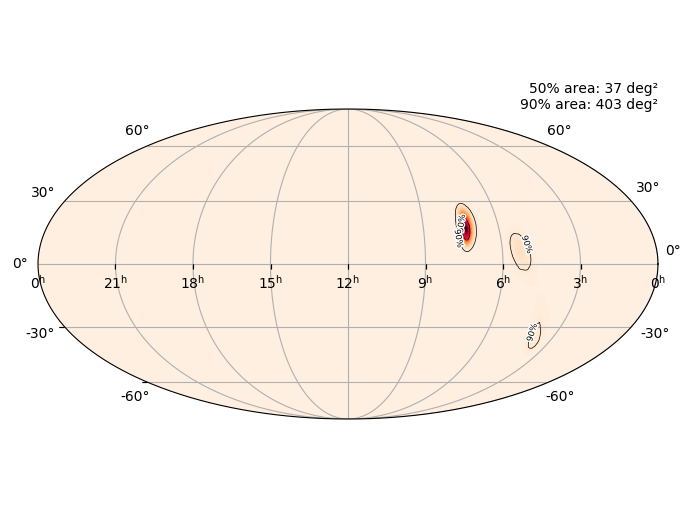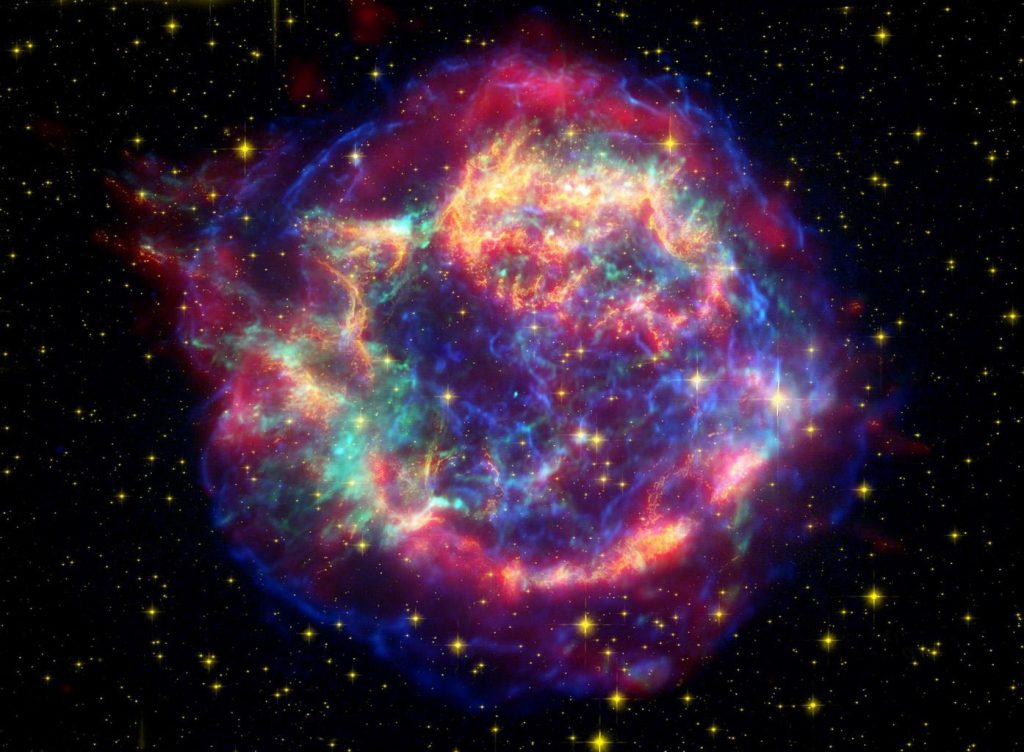Gravitational waves are caused by calamitous events in the Universe. Neutron stars that finally merge after circling each other for a long time can create them, and so can two black holes that collide with each other. But sometimes there’s a burst of gravitational waves that doesn’t have a clear cause.
One such burst was detected by LIGO/VIRGO on January 14th, and it came from the same region of sky that hosts the star Betelgeuse. Yeah, Betelgeuse, aka Alpha Orionis. The star that has been exhibiting some dimming behaviour recently, and is expected to go supernova at some point in the future. Might the two be connected?
Betelgeuse is a red supergiant star in the constellation Orion. It left the main sequence about one million years ago and has been a red supergiant for about 40,000 years. Eventually, Betelgeuse will have burned enough of its hydrogen that its core will collapse, and it will explode as a supernova.

Recently, Betelgeuse dimmed. That set off all kinds of speculation that it might be getting ready to go supernova. Astrophysicists quickly poured water on that idea. There’s no exact number, but it’s estimated that Betelgeuse won’t go supernova for another 100,000 years. But when a star dims, there’s clearly something going on.
Is this new burst of gravitational waves connected to Betelgeuse’s recent dimming? To its future supernova explosion?

Astronomers understand that Betelgeuse is a variable star, and its brightness can fluctuate. Stars like Betelgeuse aren’t just static entities. It’s a semi-regular variable star that shows both periodic and non-periodic changes in its brightness.
The kind of gravitational waves that LIGO detected are called burst waves. It’s possible that a supernova could produce them, but Betelgeuse hasn’t gone supernova and won’t for a long time.
Some think that the detection of gravitational waves in Betelgeuse’s direction is unrelated to the star itself. In fact, the detection of the burst waves may not have even been real.
Christopher Berry is an astrophysicist studying gravitational waves at Northwestern University’s Center for Interdisciplinary Exploration and Research in Astrophysics. On Twitter he spoke up about the gravitational burst waves.
Andy Howell from Las Cumbres Observatory studies supernova and dark energy. He had something to say on Twitter too, and appeared to be having fun with the whole thing. He even walked outside to check up on Betelgeuse after the detection of the burst gravitational waves.
So there you have it. No supernova for now, anyway. The burst gravitational waves may just be a glitch, and Betelgeuse’s dimming is well-understood and not a threat.
One day Betelgeuse will explode, and our night sky will change forever. But for us here on Earth, that supernova poses no problem.

An exploding star is an awesome event. And it produces a cataclysm of deadly radiation. X-rays, ultraviolet radiation, and even stellar material are ejected with great force. The deadliest radiation is gamma rays, and Betelgeuse likely won’t even produce any of those when it blows.
But in any case, we’re about 700 light years away from Betelgeuse, and that’s way too much distance for us to worry.
The biggest fallout is that the Orion constellation will change forever. And there’ll be a new object to study in the sky: a supernova remnant.

More:
- Universe Today: Waiting for Betelgeuse: What’s Up with the Tempestuous Star?
- Wikipedia: Betelgeuse
- Research Paper: The past and future evolution of a star like Betelgeuse


Thanks, very useful summary!
The absence of news has been telling. It was already inserted in Wikipedia on event candidates and while the listing looks curious – a 0.01 s burst with “tens of Hz frequencies” (I would expect kHz frequencies) – the burst seems to have been shorter than the usual 0.1 s chirp peak region for merger events.
FWIW, I found a paper on Ligo detections where they claimed there is a recurrent 10 ms burst that they don’t know the source of. It takes a coincidence in all 3 detectors (which is the support of this particular event candidate in the Ligo alert database) and a filter algorithm that doesn’t reject these bursts effectively, but it seems the most likely explanation.
And FWIW, until yesterday I was arguing that the false detection rate and the localization was telling against a coincidence. But I no longer think so since there is no support in the followups (that I have seen).
We’ve never seen a star as well studied as Betelgeuse go supernova before. And because gravitational wave astronomy is in its infancy. I’ve wondered if, as the density in the core builds up, if the star send out bursts of GW’s as a precursor to the supernova? Similar to the neutrino burst detected by Kamiokande just before SN1987A. But, instead the burst of GW’s could precede the SN by week’s, centuries, millinia. The next 100,000 is going to be interesting.